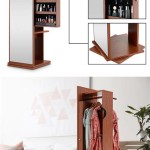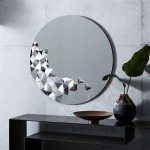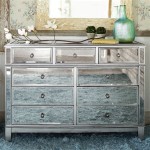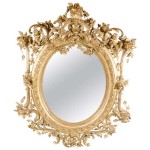Mirror Jewelry Cabinet DIY
A mirror jewelry cabinet offers a stylish and practical solution for storing and organizing jewelry. Building one allows for customization to specific needs and aesthetics, often at a lower cost than purchasing a pre-made unit. This article provides a comprehensive guide to constructing a DIY mirror jewelry cabinet.
Essential Materials and Tools
Gathering the necessary materials and tools beforehand streamlines the construction process. The following list covers the fundamental requirements:
- Mirror (sized to preference)
- Wooden boards (for frame and interior shelving)
- Wood glue
- Screws
- Measuring tape
- Saw (circular saw or hand saw)
- Drill
- Screwdriver
- Sandpaper
- Paint or stain (optional)
- Jewelry cabinet hardware (hinges, knobs, hooks, etc.)
Planning and Design Considerations
Careful planning is crucial for a successful project. Key considerations include:
- Size and Dimensions: Determine the overall size of the cabinet based on available space and storage needs.
- Storage Features: Plan for specific storage elements such as necklace hooks, ring rolls, earring holders, and shelves for larger items.
- Framing Style: Choose a frame design that complements existing decor. Simple frames are easier to construct, while more intricate designs require advanced woodworking skills.
- Mirror Selection: Consider the type and thickness of the mirror. Thicker mirrors offer greater durability but increase the overall weight.
Building the Frame
The frame provides the structural support for the mirror and internal components. Construction involves the following steps:
- Cutting the Wood: Cut the wooden boards to the desired dimensions based on the planned size of the cabinet. Ensure accurate measurements for a square and stable frame.
- Assembling the Frame: Use wood glue and screws to join the frame pieces. Clamps can be helpful to hold the pieces together while the glue dries.
- Reinforcing the Frame: Consider adding corner braces or additional support at the back for increased stability, especially for larger cabinets.
Installing the Mirror
Properly securing the mirror to the frame is essential for safety and functionality.
- Mirror Adhesive: Use a strong mirror adhesive designed specifically for this purpose. Apply the adhesive evenly to the back of the frame.
- Positioning the Mirror: Carefully position the mirror onto the adhesive, ensuring it is centered and aligned with the frame.
- Securing the Mirror: Apply pressure to the mirror to ensure proper adhesion. Allow adequate drying time according to the adhesive manufacturer’s instructions.
Adding Internal Storage
The interior storage customization is a key aspect of this project. Specific options include:
- Shelves: Install shelves of varying sizes to accommodate different jewelry items. Use shelf supports or brackets for secure attachment.
- Hooks: Attach hooks to the back panel or sides for hanging necklaces and bracelets.
- Ring Rolls: Fabric-covered dowels or foam inserts provide dedicated storage for rings.
- Earring Holders: Corkboard, fabric-covered foam, or metal mesh can be used to create earring holders.
Finishing Touches
The finishing touches enhance the aesthetic appeal and protect the wood.
- Sanding: Sand all surfaces smooth to remove any rough edges or splinters.
- Painting or Staining: Apply paint or stain to match existing decor or create a desired look. Allow sufficient drying time between coats.
- Hardware Installation: Install hinges for the door, a knob or handle for opening, and any other desired hardware.
Mounting the Cabinet
Secure and proper mounting is essential for safety and stability. Consider these points:
- Wall Anchors: Use appropriate wall anchors based on the weight of the cabinet and the wall material.
- Stud Finding: Locate wall studs for the most secure mounting. If studs are not available, use heavy-duty wall anchors.
- Leveling: Use a level to ensure the cabinet is mounted straight and plumb.
Customization and Variations
The design can be customized to suit individual preferences and needs. A few examples include:
- Adding Lighting: Install battery-operated LED lights inside the cabinet to improve visibility.
- Incorporating a Lock: A small lock can be added for enhanced security.
- Utilizing Different Materials: Explore alternative materials like reclaimed wood or metal for unique aesthetics.

Diy Jewelry Organizer Shanty 2 Chic

Diy Jewelry Organizer Shanty 2 Chic

How To Build A Mirrored Wall Mount Jewelry Cabinet Interior Frugalista

Diy Full Length Mirror With Storage Addicted 2

How To Build A Sliding Mirror Jewelry Cabinet Designed Decor

Jewelry Holder Diy Storage Mirror Closet

Diy Inset Jewelry Cabinet Part 1 Infarrantly Creative

Diy Jewellery Cabinet Dressing Room Jewelry Storage Ellen Noir
Jewelry Storage Mirror Diy A Beautiful Mess

Diy Jewelry Organizer Shanty 2 Chic







